Zero food poverty – blog
Zero food poverty – will we ever get there?
You may have heard our vision statement at Kaibosh: Zero Food Poverty, Zero Food Waste. Sixteen and a half years ago, as Aotearoa’s first dedicated food rescue charity, we set this vision to guide our mahi.
A question we often hear is: Are we there yet? The short answer is no.
But the bigger question is: Why do we have food poverty in Aotearoa? And to begin answering that, we need to look at some complex, systemic factors that contribute to food poverty.
What is food poverty?
Food poverty means being unable to access enough nutritious food due to financial hardship. This could mean not being able to afford fresh kai or lacking transport to reach food retailers. The term food insecurity is sometimes used interchangeably, though it can also refer to shorter-term disruptions in food access—such as after a flood or other crisis.
The evidence is clear. Food poverty is a very real problem for many in Aotearoa.
The annual Health New Zealand Survey includes data on household food insecurity. The latest survey showed that one in four children (27%) lived in households where food ran out often or sometimes in the 12 months prior to the 2023/24 survey and is higher than the previous year (21.3% in 2022/23). The survey also shows that one in two Pacific children (54.8%) and one in three Māori (34.3%) live in households where food runs out often or sometimes.
Why does food rescue exist?
Food rescue exists because our food system produces surplus food—good, edible kai that food businesses can’t or won’t sell. Without intervention, much of this food would go to landfill, contributing to avoidable food waste and environmental harm, while some would feed animals or be composted. Instead, food rescue organisations like Kaibosh intercept this un-sold food, check it for food safety and quality and distribute it to community groups that connect it with people facing barriers to food access.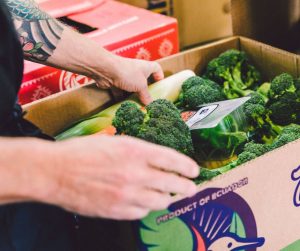
Food rescue in Aotearoa takes many forms. It might look like Kaibosh vans rescuing food from supermarkets or collecting bulk food donations, The Free Store’s volunteers visiting Wellington’s cafés to collect unsold food, local food businesses dropping off surplus to a marae, or in your local neigbourhood look out for a pātaka kai (community food pantries) where extra food from household cupboards or gardens can be left to share with others.
The bigger picture: Why does food poverty exist?
While food rescue helps to bridge gaps in access, it doesn’t address the root causes of food poverty. Despite Aotearoa producing an abundance of food, more and more people are struggling to afford the basics.
Why? Because food poverty isn’t just about food—it’s about the wider systems people live within.
Some of the key drivers include:
- Rising costs of living, including essentials like housing, electricity, and food.
- Increasing unemployment and insecure work.
- Systemic inequities stemming from colonisation.
- The impact of mental health challenges and access to support services.
- Pressures within the food system, including supply chain disruptions and limited options of suppliers in many areas.
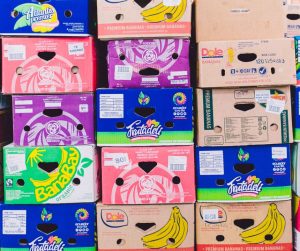 Food poverty is a symptom of deeper inequalities, and tackling it requires systemic change. At Kaibosh, we work every day to ensure good food reaches those who need it most right now via our 150+ community partners. But, we know food rescue alone isn’t the answer. Real solutions must address the broader economic, social, cultural and environmental factors that leave too many struggling to put kai on the table.
Food poverty is a symptom of deeper inequalities, and tackling it requires systemic change. At Kaibosh, we work every day to ensure good food reaches those who need it most right now via our 150+ community partners. But, we know food rescue alone isn’t the answer. Real solutions must address the broader economic, social, cultural and environmental factors that leave too many struggling to put kai on the table.
Unpacking the detail – the drivers of food poverty
Overall Living Costs
The rising cost of living in New Zealand in recent times—driven by escalating rental, electricity, and food prices, coupled with higher unemployment—has exacerbated food poverty. Over the three years to December 2024, average household living costs rose by 6% per year, with the number ‘officially’ jobless rising by more than 30,000 in the past 12 months alone. Four hundred thousand people needed welfare support in December 2024—the highest number since the 1990s.
- Housing Costs
Housing affordability remains a significant barrier for many. In January 2024, rental prices for new tenancies rose by 2.5% nationwide, with parts of the South Island experiencing even higher increases. For low-income renters, this ongoing trend further constrains household budgets, leaving little room for food expenditure.
- Electricity Prices
A Consumer NZ report highlights disparities in electricity costs, with low-income regions often paying significantly more than affluent areas. Residents in Kerikeri, for example, pay 40% more for electricity than those in Auckland. Many low-income households are also placed on pre-pay plans with higher rates, further widening the inequality gap. From 1 April 2025, the average household’s energy bill is set to increase by $10 a month. Exploring tools like Powerswitch or ethical providers such as Toast Electric and Nau Mai Rā may offer some relief.
- Food Costs
The University of Otago’s Food Cost Survey reveals an ongoing increase in the cost of basic healthy food, which disproportionately affects low-income households. These families are often forced to choose cheaper, less nutritious options, exacerbating health and well-being disparities.
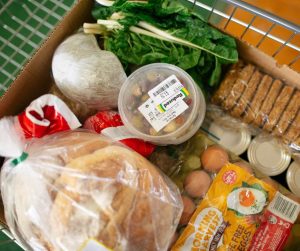
Rising Unemployment
Unemployment rates in New Zealand rose from 3.2% in December 2021 to 5.1% in December 2024. This increase reduces household incomes, increasing reliance on insufficient social welfare payments, and deepening food insecurity for many families.
Colonisation and Systemic Inequities
The impact of colonisation is a significant factor, with the loss of Māori land and traditional food systems leaving many communities reliant on expensive, processed foods. Kai sovereignty, which emphasises locally controlled and culturally appropriate food systems, is a solution that requires more robust policy and financial support. Honouring Te Tiriti is crucial to addressing these inequities and creating long-term solutions.
Mental Health
Mental health challenges are on the rise. Between 2016/17 and 2021–23, the prevalence of adults experiencing mild or greater anxiety and/or depression symptoms increased from 25% to 35%. This escalation affects individuals’ ability to maintain employment or manage other daily tasks, further increasing the risk of food insecurity.
GP and Dental Care Access
By 2024, workforce shortages in primary healthcare had resulted in 36% of general practitioners (GPs) closing their books to new patients. With 6% of the population unable to enrol with a GP, escalating consultation fees, and limited access to dental care for those over the age of 18 – particularly those living paycheck to paycheck – many individuals are left without essential healthcare. This lack of access to services can lead to severe health problems, which, if untreated, will have lifelong consequences. These gaps in care will inevitably place a heavier burden on our healthcare system in the future, exacerbating both personal and public health challenges.
Nutrition and Chronic Illness
A food system heavily weighted toward processed, calorie-dense options continues to undermine the health and wellbeing of many in our communities. For individuals and whānau living on limited incomes, these high-energy, low-nutrient foods are often the more affordable or accessible choice — despite falling well short of Te Whatu Ora’s healthy eating guidelines. This imbalance contributes to, and is exacerbated by, chronic health conditions such as diabetes and cardiovascular disease. In turn, these illnesses deepen the impacts of food insecurity, creating a cycle of poor health and inequality that is difficult to break.
What about our food systems?
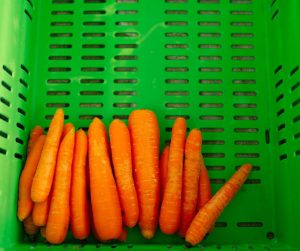
There are challenges (and opportunities) within our food systems. Environmental and climate-related challenges can affect food production at times, while events on the other side of the globe can cause shocks to international food supply chains and disrupt transport.
Food waste paradoxes
New Zealand’s paradox of food poverty is stark: despite producing enough food to feed approximately 50 million people—vastly exceeding our population of around 5.12 million— most of our food production is exported. However, for the New Zealand household, issues of accessing good food are often not a result of production failures. There are challenges at play with our domestic market system and distribution systems.
Food waste results all along the food supply chain and can be due to things like selection systems (produce rejected for superficial imperfections), transport issues (like ferries being cancelled) or retailer issues (like over-ordering). One in three items of food produced doesn’t make it from farm gate to a plate, because of failures within our food system and supply chain.
Climate and environmental pressures
Climate change intensifies food system challenges. Severe weather events disrupt local food production, increasing costs for fresh, locally produced foods and heightening reliance on less affordable imports. This, in turn, exacerbates the environmental footprint of the food system.
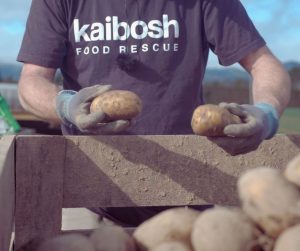
A food system that also includes an active ‘direct to local community’ element would improve resilience to weather-related disruptions, reduce reliance on imports as a substitute, and also reduce the environmental footprint of the food system.
Kaibosh’s role – food rescue and future directions
While Kaibosh has made significant progress in reducing food waste, 4.9million kgs to date (March 2025), and supporting communities, achieving food security requires system-wide change. We would like to see solutions that include:
- Strengthening Kai Sovereignty: Empower Māori-led initiatives to reclaim traditional food systems.
- Collaborative Innovation: Build regional food hubs and integrate local growers into supply chains.
- Advocating for Policy Change: Implement a National Food Strategy with agreement from all political parties, mandate and fund food rescue.
- Wider Advocacy Change: Te Tiriti-led solutions, living wages, affordable housing, more social housing, fairer energy pricing and fairer food pricing.
- Investing in Healthcare Services: Ensure equitable access to mental and physical health care providers.
- Invest in Current solutions: Solutions like food rescue kitchens and farm to food rescue programmes like Second Harvest at Kaibosh – which allows us to collect more healthy fresh produce direct from farms.
- Invest in Climate Change Solutions: help build resilient, food secure communities.
Food poverty is deeply rooted in systemic inequities, cultural challenges, and environmental pressures. Kaibosh seeks not only to act as the ambulance at the bottom of the cliff but also to change the systems that perpetuate these issues.
Collaboration, not competition, among local communities, policymakers, food producers and suppliers is essential for meaningful change.
This blog was written by Susie Robertson, Kaiārahi/CE of Kaibosh, with input from Ganesh Nana. Ganesh is an economist and thought leader with 40 years of experience and knowledge combining economics and data. He is also a member of our Kaibosh trustee board.
Further reading:
We work with many groups who are playing a significant role in changing the food systems. If you’d like to find out more here are some useful links:




